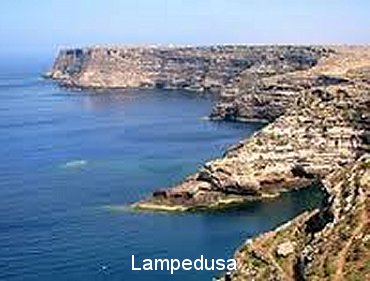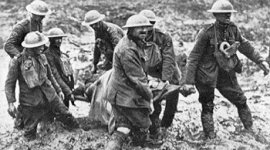LIFE AND DEATH ON LAMPEDUSA
The wordless documentary, Fire at Sea, will never be bettered in its genre
TMI. It’s the abbreviation of our generation. The one that defines us – and our predicament. Too Much Information. But it could also be Too Many Images. The confluence of written information and digital imagery makes us the most observed cohort in history; it may also make us the most confused, as we try to fit the commentary to the pictures in a fair and considered way. Instead of a neatly indexed library, our brains feel like a desk with a surfeit of papers strewn haphazardly, inducing a sense of agitation and unease.
Some of the defining issues of our era suffer from a surfeit of commentary, notably the refugee crisis. It is one of those questions we approach primarily with our emotions. This is not necessarily wrong, for deep human need and anxiety provokes visceral responses, but it also means we are less likely to listen to people who may disagree with us. When some people think about the refugee crisis, the image of Anis Amri comes to mind: the Tunisian asylum seeking Berlin market murderer, while for others, it is Alan Kurdi, the three year old Syrian boy drowned in the Mediterranean Sea. Is it any wonder the debate on refugees is so emotive?
The documentary film, Fire at Sea (2016), is a remarkably sophisticated and wise addition to the conversation. Made by Italian film-maker Gianfranco Rosi, it is set on the island of Lampedusa, which, though Italian, is closer to Tunisia than to Sicily and the place most refugees are aimed in the direction of by the traffickers. The film splices the refugee question with the life of one of the islanders, a boy called Samuele. His is not a childhood of privilege, for life on the island is difficult, but he possesses everything the refugees lack: a sense of home, stability and safety. Samuele is treated for ailments by the same doctor, Pietro, who has to work with many of the seriously ill refugees, diminished by malnutrition, dehydration and burns from diesel fuel. Throughout, the doctor shows great dignity and concern for his unexpected patients, but just occasionally the grief and distress this incurs bubbles to the surface.
There is no commentary in the film. The refugee debate is stripped back to its core: the lives of one working class island community and a desperate cohort of people fleeing war intersecting at a moment in time. The way the human trauma blends with the mundanity of those idle hours of growing up produces a sharp and unusual taste in the mouth; as the Book of Common Prayer says: in the midst of life we are in death. The discipline Rosi exhibits in not making a film to suit an existing narrative is deeply rewarded. Somehow the simple observational skills he deploys carry more moral weight than a shouty documentary maker (of which there are several) could supply.
The film’s denouement, the saving of an overloaded boat, carries stunning, heart-rending power. Some are nearly dead from dehydration; many weep, clinging to the nearest person; all are in shock, disorientated, speechless. They are not dead, but neither are they alive. It is a story repeated daily.
There is disarming simplicity in the parable of the Good Samaritan. Jesus does not overstate his case. He invites us to make a response to human need without the overlay of superfluous moral commentary. We are human; some instincts are just etched in the heart, carrying the imprint of the maker. It is this understanding that makes Rosi’s film as human an experience as you will ever have in front of the TV.
POPULAR ARTICLES

Obama's Covert Wars
The use of drones is going to change warfare out of all recognition in the next decades.

Through A Glass Starkly
Images of traumatic incidents caught on mobile phone can be put to remarkable effect.

What Are British Values?
Is there a British identity and if so, what has shaped the values and institutions that form it?



